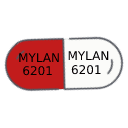Uses
The combination of trandolapril and verapamil is used to treat high blood pressure. It is a combination of two medications. It decreases certain chemicals that tighten the blood vessels, so blood flows more smoothly. It also relaxes your blood vessels so your heart does not have to pump as hard.
This medication is sometimes prescribed for other uses; ask your doctor or pharmacist for more information.
Side Effects Of Trandolapril And Verapamil
Trandolapril and verapamil may cause side effects. Tell your doctor if any of these symptoms are severe or do not go away:
- cough
- dizziness or lightheadedness
- sore throat
- hoarseness
- excessive tiredness
- headache
- diarrhea
- constipation
- upset stomach
- heartburn
- flushing (feeling of warmth)
- slow heartbeat
- vivid, unusual dreams
If you experience any of the following symptoms, call your doctor immediately:
- swelling of the face, eyes, lips, tongue, arms, or legs
- difficulty breathing or swallowing
- fainting
- rash
- yellowing of the skin or eyes
- fever
- increase in frequency or severity of chest pain (angina)
Warnings & Precautions
Before taking trandolapril and verapamil:
- tell your doctor and pharmacist if you are allergic to trandolapril, verapamil, benazepril, captopril, enalapril, fosinopril, lisinopril, moexipril, quinapril, ramipril, or any other drugs.
- tell your doctor if you have diabetes (high blood sugar) and you are taking aliskiren (Tekturna, in Amturnide, Tekamlo, Tekturna HCT). Your doctor will probably tell you not to take trandolapril and verapamil if you have diabetes and you are also taking aliskiren.
- tell your doctor and pharmacist what prescription and nonprescription medications you are taking, especially albuterol (Volmax, Proventil [tablets and syrup only], Ventolin [tablets and syrup only]); allopurinol (Zyloprim); antacids; betamethasone (Celestone); carbamazepine (Tegretol); chemotherapy medications; cimetidine (Tagamet); cortisone (Cortone); cyclosporine (Neoral, Sandimmune); dantrolene (Dantrium); dexamethasone (Decadron, Dexone); diuretics (‘water pills’); fentanyl (Duragesic); fludrocortisone (Florinef); heart and blood pressure medications such as beta-adrenergic blockers, digoxin (Lanoxin), disopyramide (Norpace), flecainide (Tambocor), procainamide (Procan), and quinidine (Quinaglute, Quinadex); hydrocortisone (Cortef, Hydrocortone); lithium (Eskalith, Lithobid); medications that suppress your immune system; medications to treat depression or psychiatric conditions; medications to treat glaucoma (increased pressure in the eye); medications to treat pain; muscle relaxants; methylprednisolone (Medrol); nonsteroidal anti-inflammatory drugs; other medications for high blood pressure or diabetes; phenobarbital; phenytoin (Dilantin); potassium supplements; prednisolone (Prelone); prednisone (Deltasone, Orasone); rifampin (Rifadin, Rimactane); theophylline; tranquilizers; triamcinolone (Aristocort); and vitamins or herbal products.
- tell your doctor if you have or have ever had heart, liver, or kidney disease; a recent heart attack; an irregular heartbeat; muscular dystrophy; gastrointestinal obstruction (strictures); or diabetes.
- if you are having surgery, including dental surgery, tell the doctor or dentist that you are taking trandolapril and verapamil.
- you should know that this drug may make you drowsy. Do not drive a car or operate machinery until you know how trandolapril and verapamil will affect you.
- remember that alcohol can add to the drowsiness caused by this drug. Do not drink alcohol while taking this medication.
Dosage Of Trandolapril And Verapamil
The combination of trandolapril and verapamil comes as a tablet to take by mouth. It is usually taken once a day. The tablet should be swallowed whole. Do not chew, divide, or crush the tablets. Follow the directions on your prescription label carefully, and ask your doctor or pharmacist to explain any part you do not understand. Take trandolapril and verapamil exactly as directed. Do not take more or less of it or take it more often than prescribed by your doctor.
The combination of trandolapril and verapamil controls high blood pressure but does not cure it. Continue to take trandolapril and verapamil even if you feel well. Do not stop taking trandolapril and verapamil without talking to your doctor.
Other
Keep all appointments with your doctor and the laboratory. Your blood pressure should be checked regularly to determine your response to trandolapril and verapamil.
Your doctor may ask you to check your pulse (heart rate) daily and will tell you how fast it should be. If your pulse is slower than it should be, call your doctor for directions on taking trandolapril and verapamil that day. Ask your doctor or pharmacist to teach you how to check your pulse.
Do not let anyone else take your medication. Ask your pharmacist any questions you have about refilling your prescription.
It is important for you to keep a written list of all of the prescription and nonprescription (over-the-counter) medicines you are taking, as well as any products such as vitamins, minerals, or other dietary supplements. You should bring this list with you each time you visit a doctor or if you are admitted to a hospital. It is also important information to carry with you in case of emergencies.
Source
All information has been provided courtesy of MedLinePlus from the National Library of Medicine and from the FDA.



